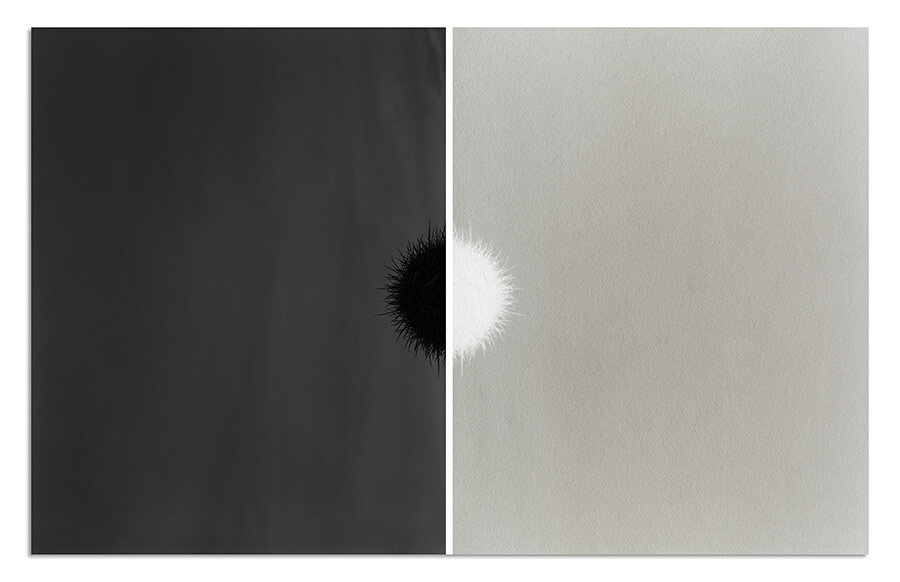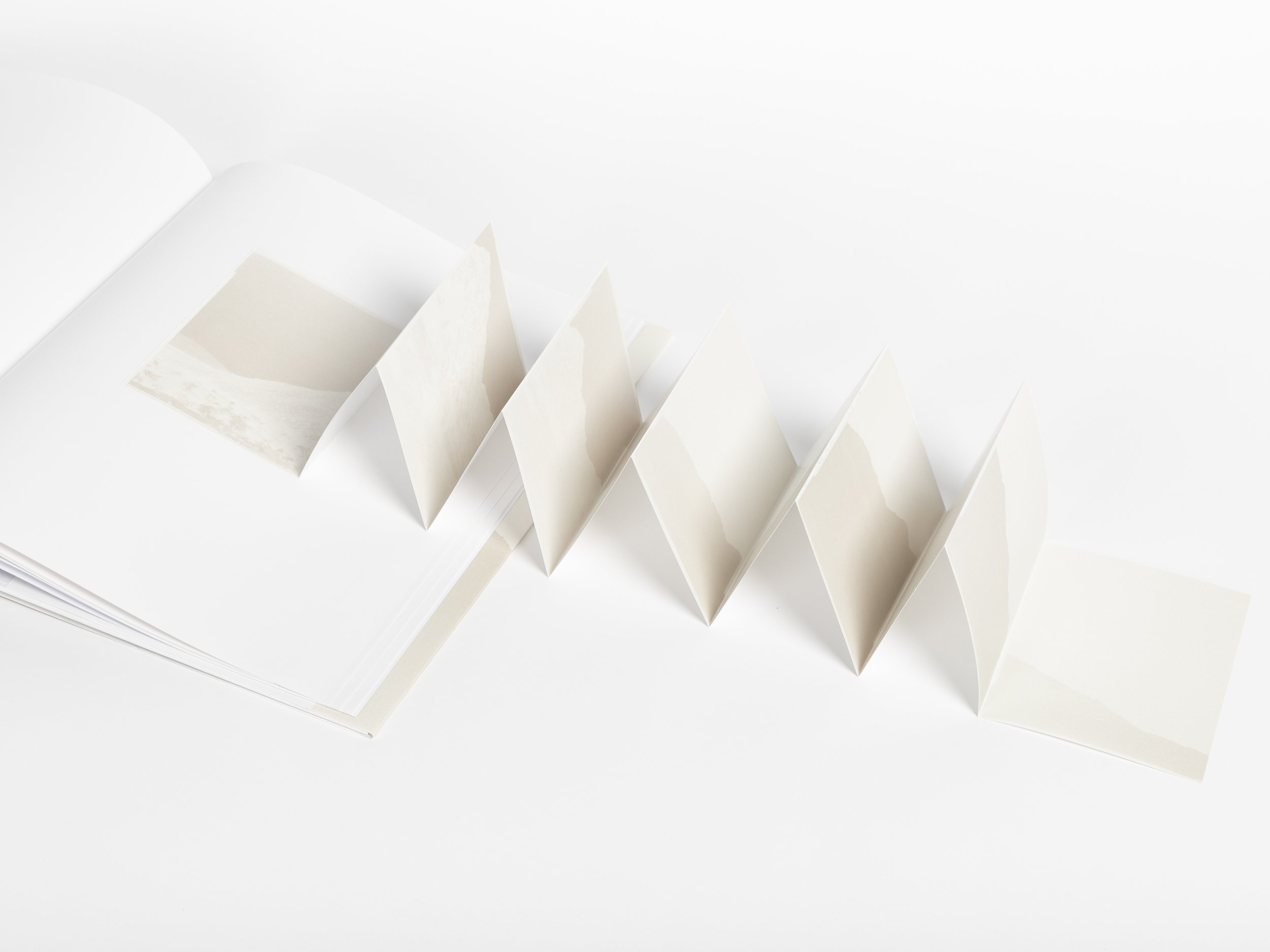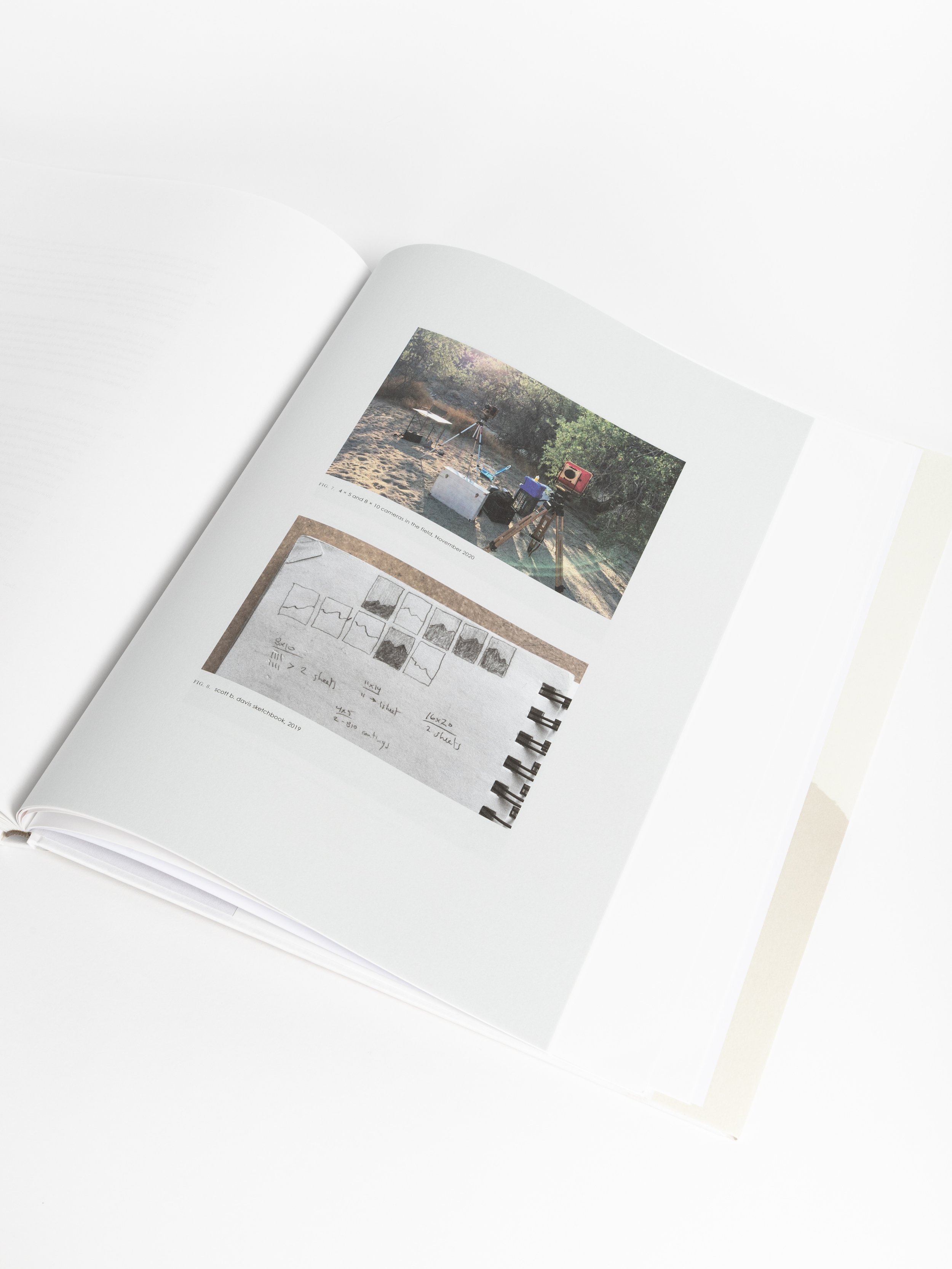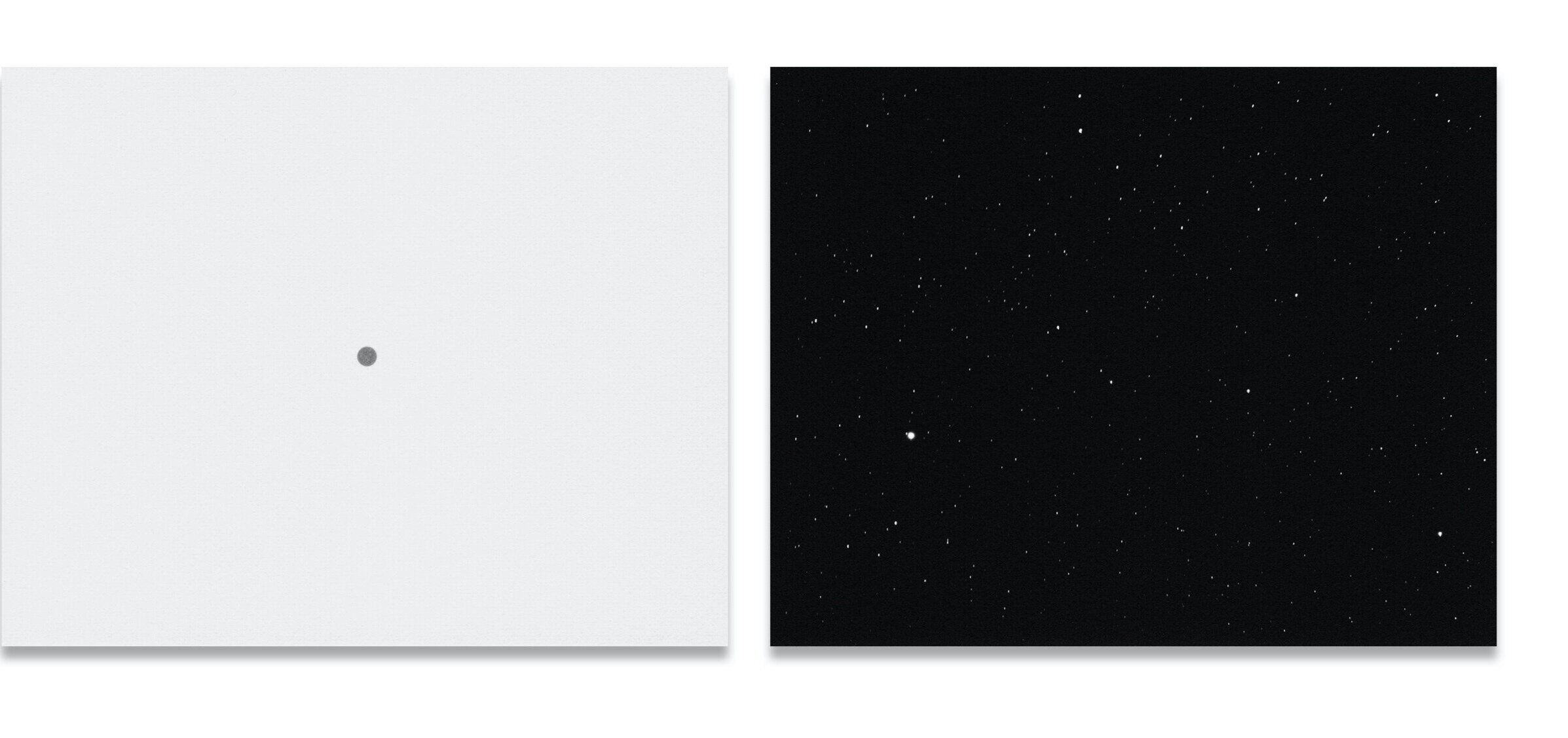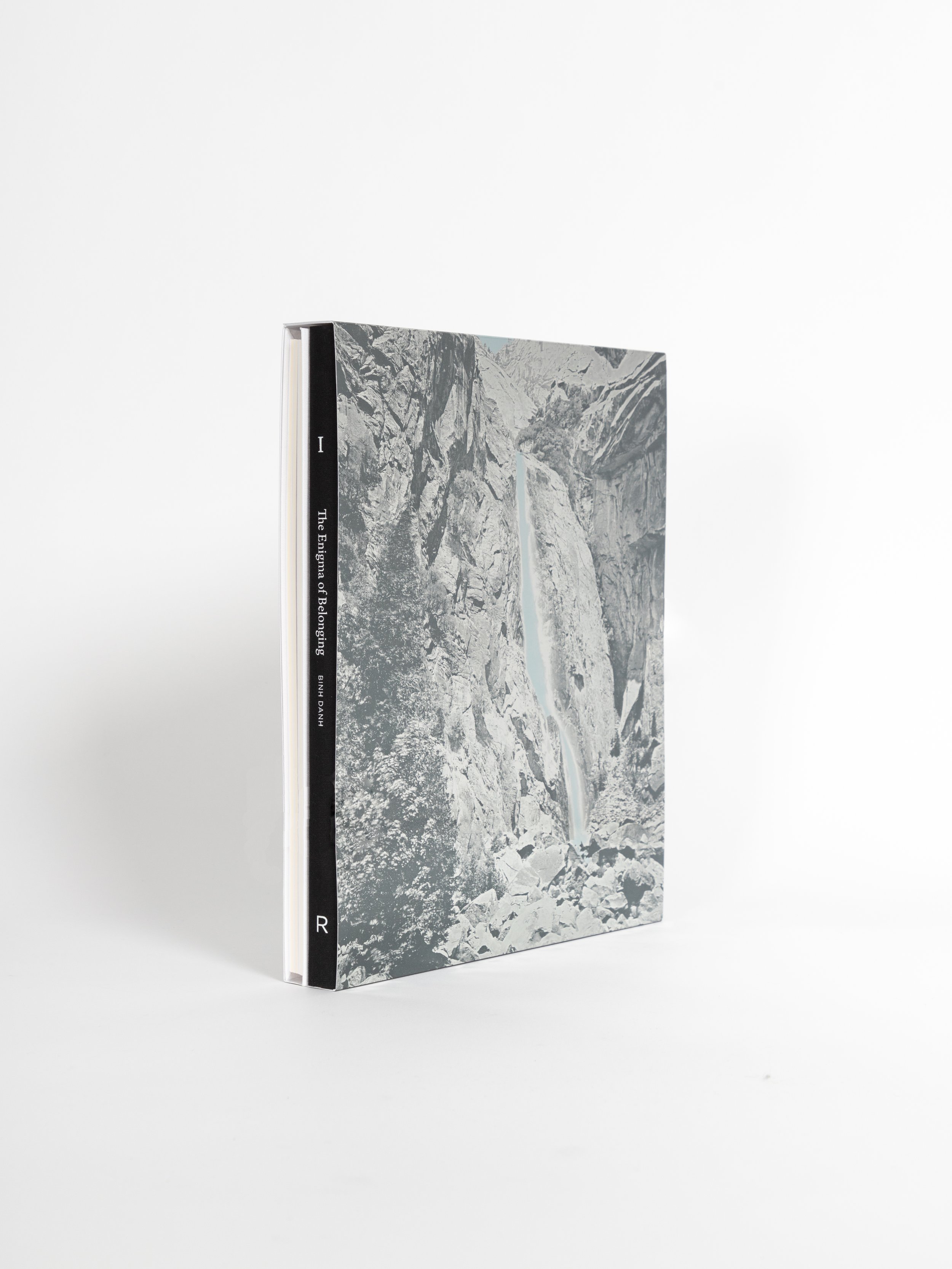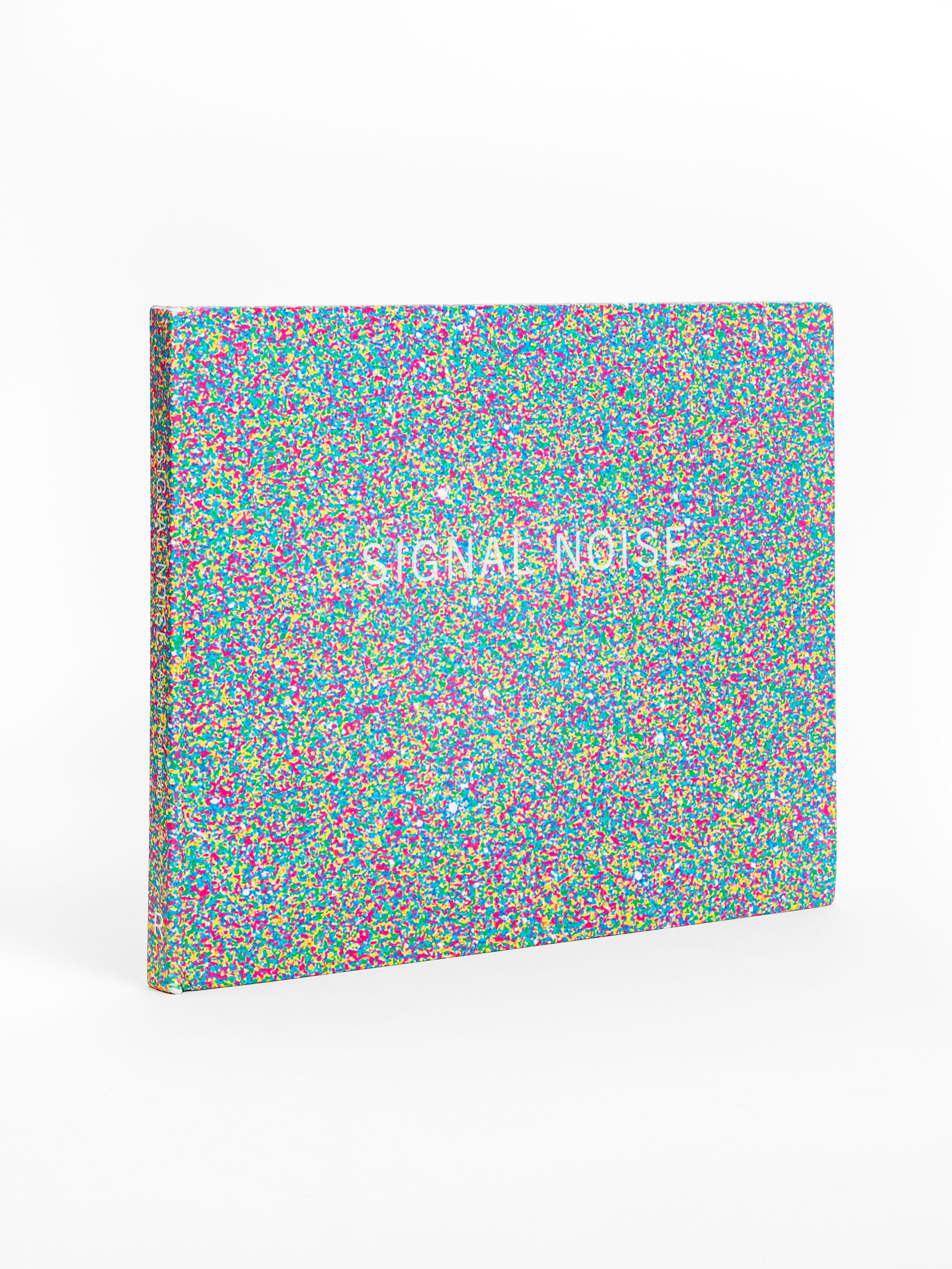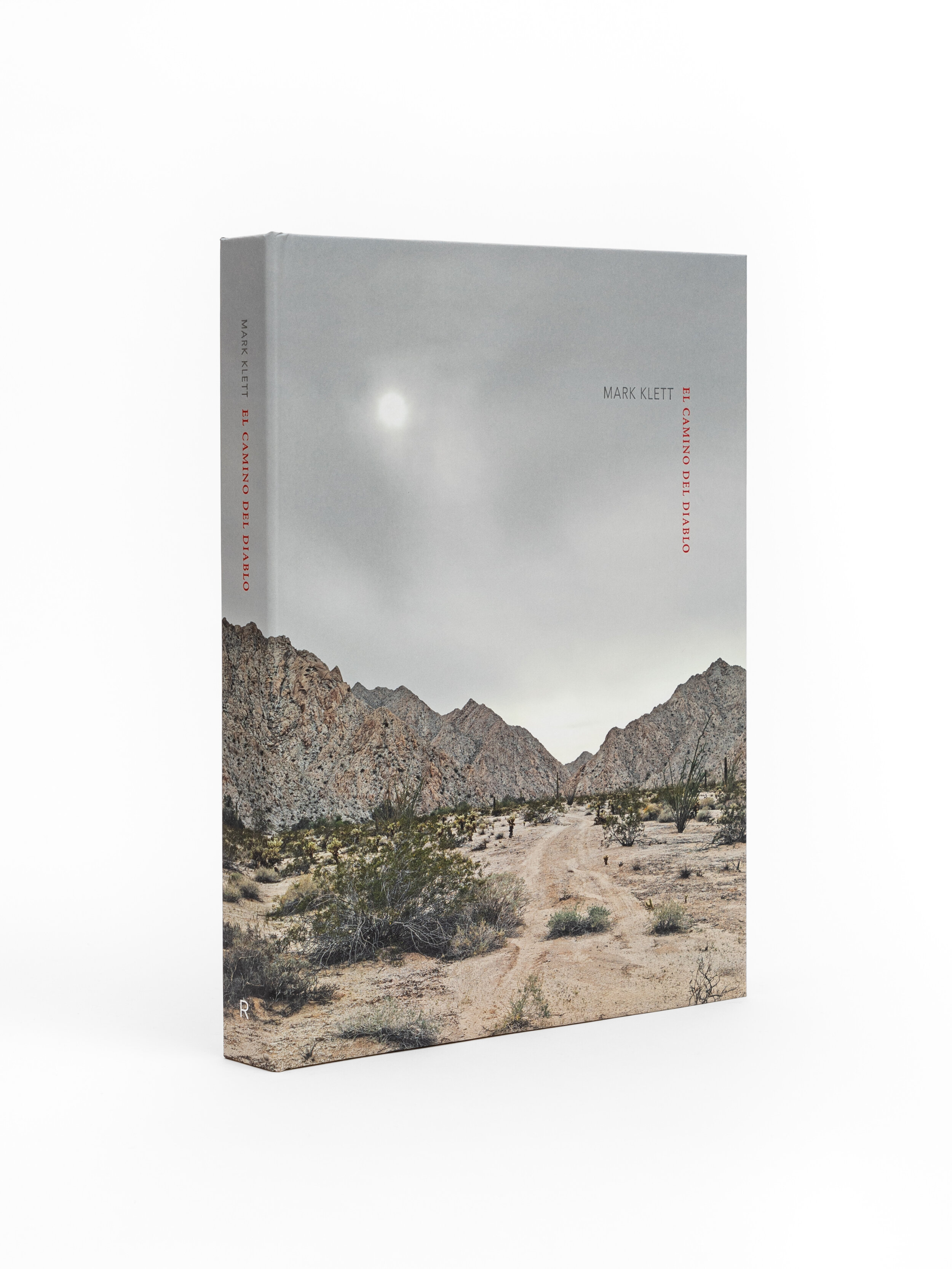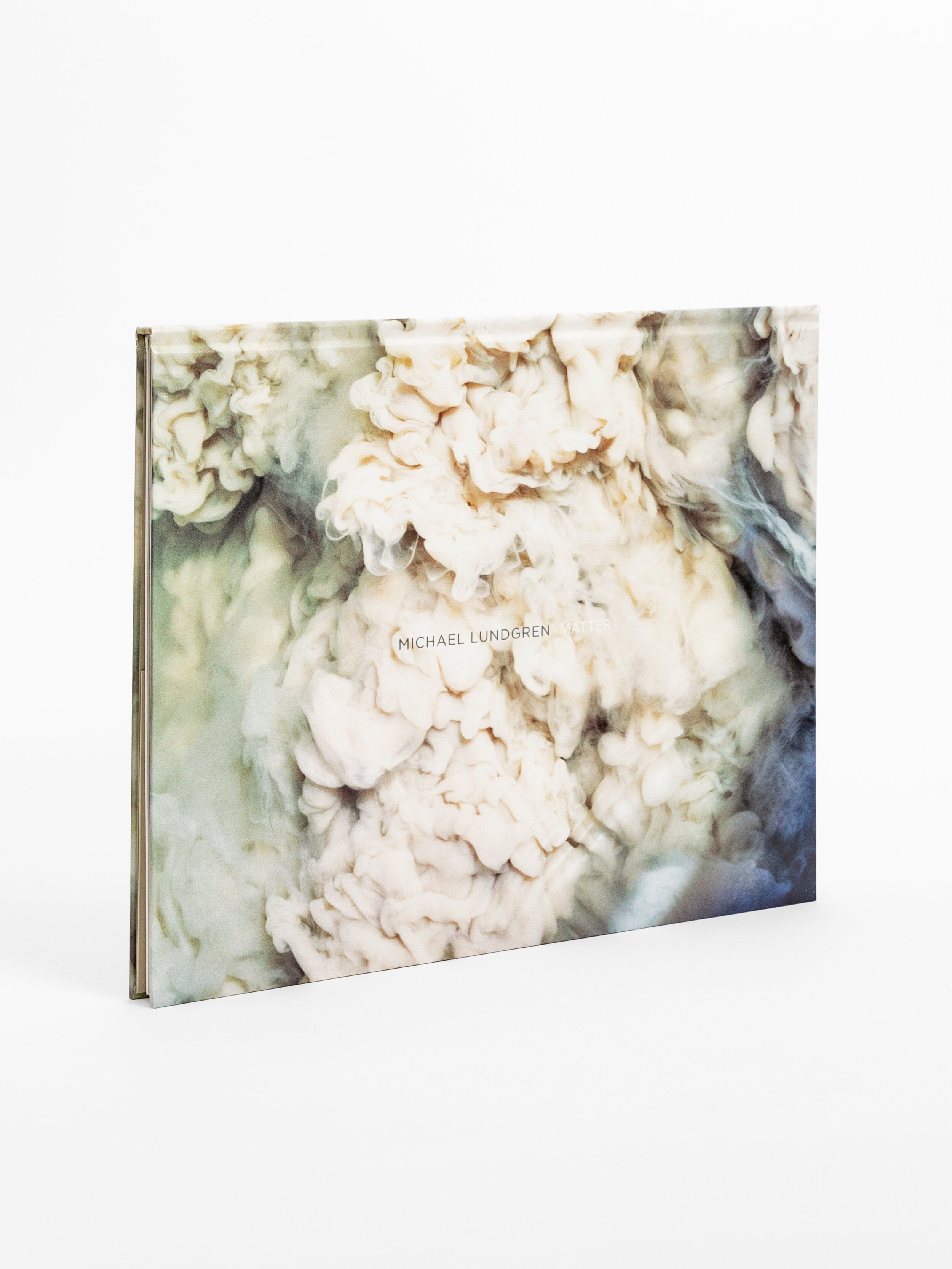scott b. davis: sonora
In sonora, scott b. davis uses combinations of in-camera palladium paper negatives and traditional film-based platinum/palladium prints. The images explore the boundaries of visibility in the darkness and overwhelming light of the Sonoran Desert, creating pictures of landscapes that are both literal and abstract. The light and space found in the open desert are felt in these uniquely rendered images comprised of diptychs, triptychs, and occasional works that include as many as ten or twelve unique images in a series.
By using exposure to intense UV light, Davis has pioneered a process that captures images invisible to the naked eye, creating prints rich in contrast to push the boundaries of the visible spectrum and the perceptual limits of human vision. His prints invite closer, deeper looking at landscapes that seem familiar to us in the daylight but evolve into something altogether different when rendered as abstract records of place. The aim is not to represent the desert as we think we know it, but to evoke an intimate connection with the desert through new perspectives.
Learn more about the accompanying limited edition HERE.
In sonora, scott b. davis uses combinations of in-camera palladium paper negatives and traditional film-based platinum/palladium prints. The images explore the boundaries of visibility in the darkness and overwhelming light of the Sonoran Desert, creating pictures of landscapes that are both literal and abstract. The light and space found in the open desert are felt in these uniquely rendered images comprised of diptychs, triptychs, and occasional works that include as many as ten or twelve unique images in a series.
By using exposure to intense UV light, Davis has pioneered a process that captures images invisible to the naked eye, creating prints rich in contrast to push the boundaries of the visible spectrum and the perceptual limits of human vision. His prints invite closer, deeper looking at landscapes that seem familiar to us in the daylight but evolve into something altogether different when rendered as abstract records of place. The aim is not to represent the desert as we think we know it, but to evoke an intimate connection with the desert through new perspectives.
Learn more about the accompanying limited edition HERE.
In sonora, scott b. davis uses combinations of in-camera palladium paper negatives and traditional film-based platinum/palladium prints. The images explore the boundaries of visibility in the darkness and overwhelming light of the Sonoran Desert, creating pictures of landscapes that are both literal and abstract. The light and space found in the open desert are felt in these uniquely rendered images comprised of diptychs, triptychs, and occasional works that include as many as ten or twelve unique images in a series.
By using exposure to intense UV light, Davis has pioneered a process that captures images invisible to the naked eye, creating prints rich in contrast to push the boundaries of the visible spectrum and the perceptual limits of human vision. His prints invite closer, deeper looking at landscapes that seem familiar to us in the daylight but evolve into something altogether different when rendered as abstract records of place. The aim is not to represent the desert as we think we know it, but to evoke an intimate connection with the desert through new perspectives.
Learn more about the accompanying limited edition HERE.
ACCOMPANYING LIMITED EDITION
YOU MAY ALSO LIKE
-
Photography by scott b. davis
Essay by Joshua Chuang
Interview by Virginia HeckertHardcover
10.8 x 12.4 inches
132 pages / 93 images
ISBN: 9781942185840 -
scott b. davis has been photographing the desert since 1993.
He was born and raised in the suburbs of Washington, D.C., and from a young age had eyes on places west of the Mississippi. He became interested in photography in the early 1990s and was soon drawn to unremarkable wilderness corridors—the places where maps offered little if any information. These spaces require research to learn what, if anything, one might find there, and generally benefit those who learn the history of its use in earlier times. Today, his interest in history and place drives the work he does with photography, and encourages taking an active role as a traveler in the landscape. In the mid-1990s, his work with photography led me to explore nineteenth-century photographic processes and formulas. He found the possibilities of platinum/palladium printing were a good fit with the large format cameras he was also beginning to use. These tools formed the basis of his work and continue to drive the photographs he makes today.
Recent museum group exhibitions include the New Mexico Museum of Art, Center for Creative Photography, and The Getty Museum. His work is found in the collections of the J. Paul Getty Museum, Pier 24, George Eastman Museum, Nelson Atkins Museum of Art, Los Angeles County Museum of Art, Museum of Photographic Arts, and the Kiyosato Museum of Photographic Arts, among others. Davis’s photographs have been exhibited throughout the United States, Europe, and Asia, and his work has been reviewed in The New York Times, Village Voice, New Yorker, Los Angeles Times. He is represented by EUQINOM Gallery (San Francisco) and Etherton Gallery (Tucson).




